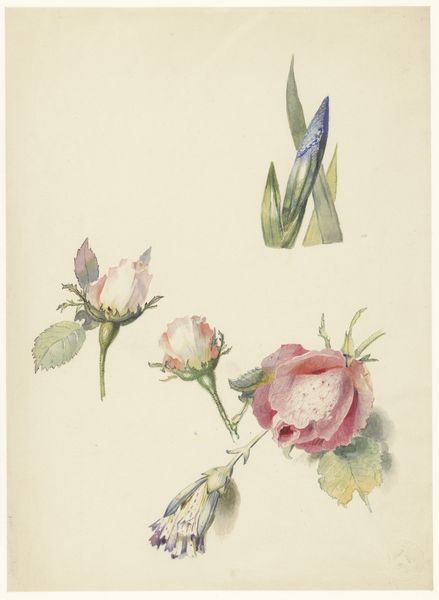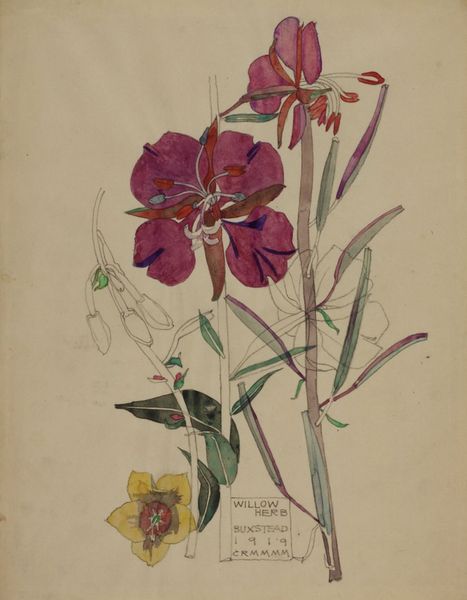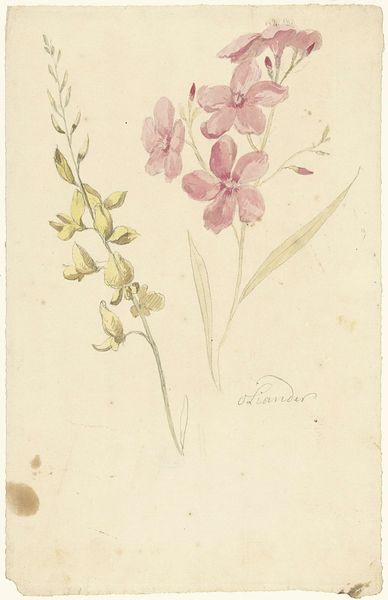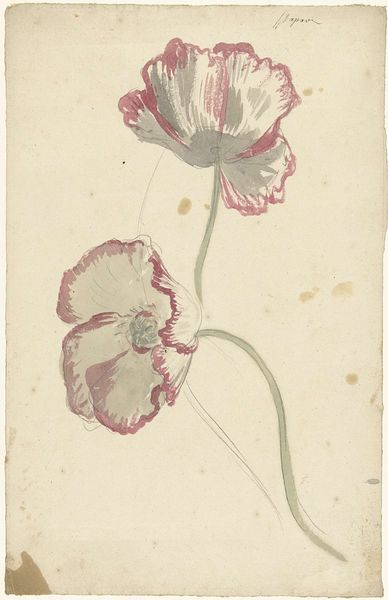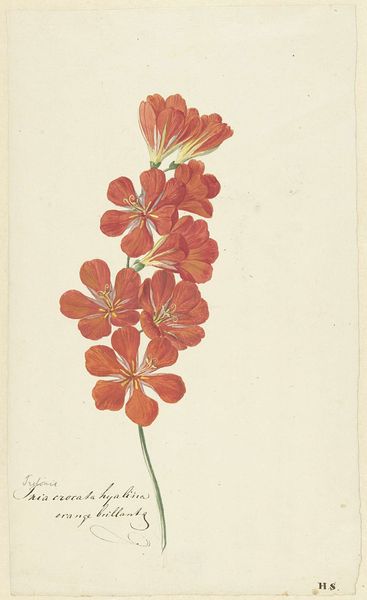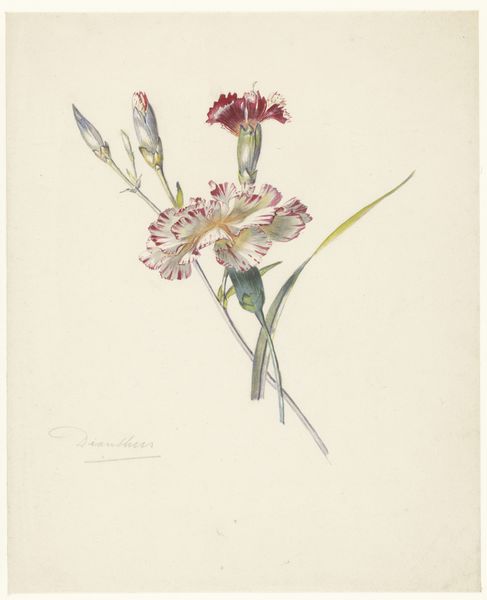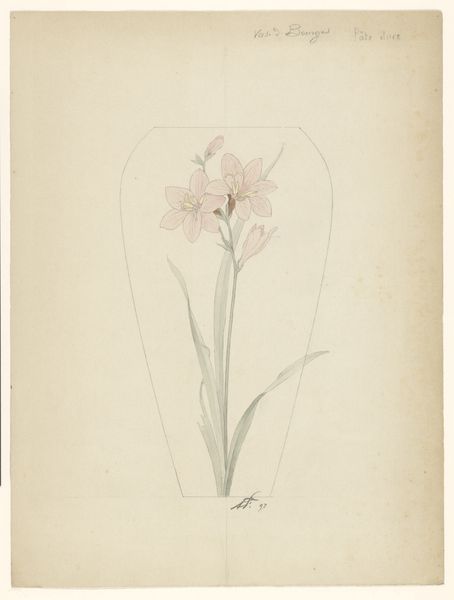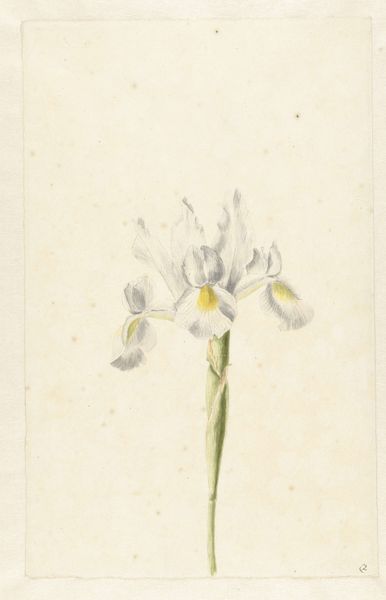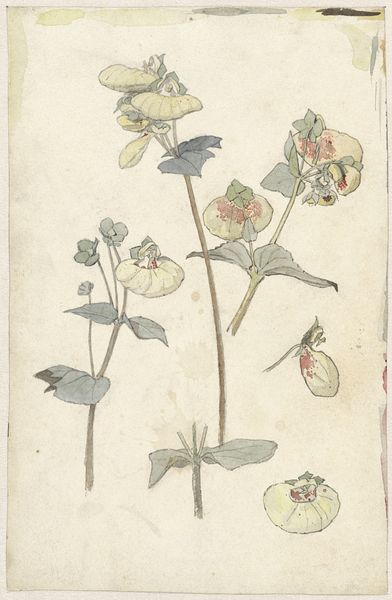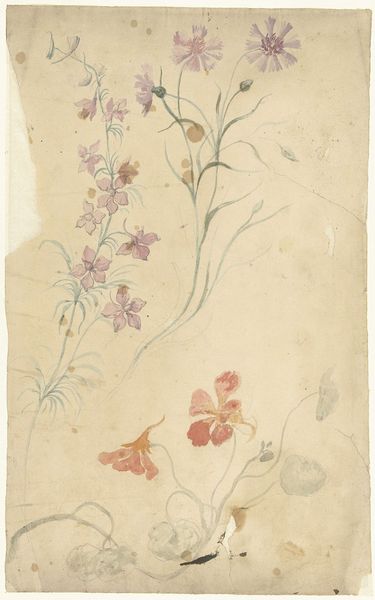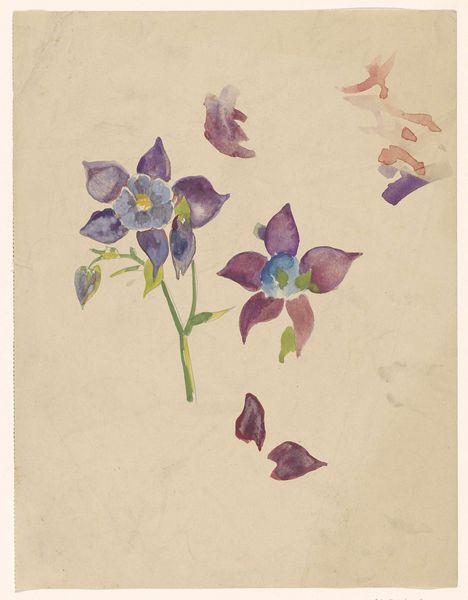
Drie segmenten van een met klaprozen beschilderde vaas en een met bladeren beschilderd deksel 1897
0:00
0:00
Dimensions: height 274 mm, width 195 mm
Copyright: Rijks Museum: Open Domain
Curator: This lovely watercolor and line painting is titled "Three Segments of a Vase Painted with Poppies and a Lid Painted with Leaves" by Anatole-Alexis Fournier, dating back to 1897. Editor: Oh, those colours! That soft, muted palette… it’s like a half-remembered dream of summer. There's such a delicate, almost hesitant touch. The way the poppies seem to float—it’s captivating. Curator: Indeed. Fournier was clearly influenced by the Art Nouveau movement, which placed a high value on organic forms, and its close contemporary, Impressionism, in his quest to represent these ephemeral forms in a modern fashion. The way he breaks down the design into separate components, though – almost like architectural blueprints—suggests something beyond pure aesthetics at play. Editor: That makes sense. Now that you point it out, it's a design more than a pure attempt at imitation. The symmetry, the careful spacing... Did someone commission a dinnerware set based on these designs, perhaps? Or perhaps even wallpaper? I think it could feel like being permanently immersed in the warmth of late afternoon. Curator: It's very possible! Many Art Nouveau artists designed objects for mass production. Art was meant to permeate life! The poetics of mass appeal! This preliminary study would be critical for those applications, allowing for modular scaling and iteration. And speaking of color, Fournier, despite this botanical interest, presents his works very graphically. The muted palette you picked on earlier could be his reaction to commercial print and manufacturing needs. Editor: Maybe that's why they appear ghostly: not because of what he tries to depict but how to repeat. Isn't that the true conundrum for a designer. Curator: Exactly. The piece hints at the tensions of the burgeoning industrial age where artisanal design met the desires of the masses. It’s lovely to see it at play on such a modest object like a vase! Editor: I am going back to my first feeling: This piece whispers more than it shouts, an invitation for gentle contemplation. I wonder what Fournier himself hoped we would discover here. Curator: Whether for aesthetic contemplation, or technical insight into its possible future material manifestation, his legacy remains powerful still. It certainly makes you look at the wallpaper very differently, doesn't it?
Comments
No comments
Be the first to comment and join the conversation on the ultimate creative platform.
